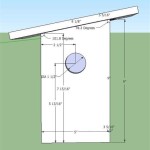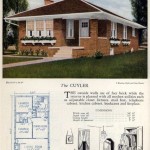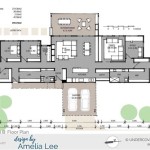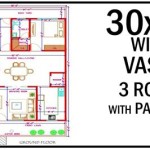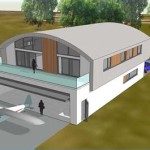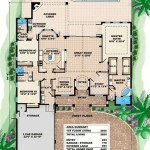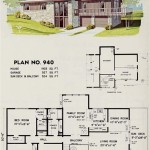Small Space Efficient Home Plans: Maximizing Livability and Functionality
The escalating cost of land and the burgeoning urban population have spurred a significant interest in small space living. This trend necessitates innovative and efficient home plans that maximize livability without sacrificing functionality or aesthetics. Small space efficient home plans are not simply about downsizing; they represent a strategic approach to design that prioritizes intelligent layout, multi-functional elements, and optimized storage solutions.
Designing a small home requires careful consideration of every square foot. The goal is to create a space that feels larger than its actual dimensions, is comfortable to live in, and meets the needs of its occupants. This involves a shift in mindset from accumulating possessions to curating them, and from prioritizing square footage to optimizing functionality.
Key Considerations in Small Space Design
Several key considerations underpin the successful development of small space efficient home plans. These include space planning, material selection, and the incorporation of multi-functional elements. Addressing these areas thoughtfully is crucial to achieving a home that feels spacious, comfortable, and meets the practical needs of its inhabitants.
Space Planning: Effective space planning is paramount in small home design. This involves carefully analyzing the needs and lifestyle of the occupants to determine the optimal layout. Open-concept living areas are often favored as they create a sense of spaciousness and facilitate natural light flow. Thoughtful zoning within these open spaces is vital to delineate distinct areas for living, dining, and cooking. Furniture placement should be strategic, avoiding clutter and maximizing circulation. Vertical space should be utilized effectively through tall shelving, wall-mounted storage, and lofted areas where feasible.
Furthermore, the flow between indoor and outdoor spaces should be considered. Integrating outdoor areas, such as patios or balconies, can extend the living space and create a more open and airy feel. Large windows and sliding doors can also blur the boundaries between indoors and outdoors, enhancing the sense of spaciousness. The incorporation of natural light is crucial; ample natural light can significantly contribute to the perceived size of a small space.
Material Selection: The choice of materials plays a critical role in the overall aesthetic and functionality of a small home. Light colors and reflective surfaces can visually expand a space, while darker colors can make a room feel smaller and more enclosed. Strategically placed mirrors can also create the illusion of depth and increase natural light reflection. Durable and low-maintenance materials are preferable, as they reduce the need for frequent repairs and replacements. Multi-purpose materials, such as engineered wood flooring that can withstand both high traffic and moisture, are also valuable assets in a small home.
Minimalist design principles are often employed in small space homes to avoid clutter and create a sense of calm. Clean lines, simple forms, and a limited palette of colors and materials contribute to a cohesive and uncluttered aesthetic. Texture can be introduced through natural materials such as wood, stone, and woven fabrics to add visual interest without overwhelming the space.
Multi-Functional Elements: The incorporation of multi-functional elements is a hallmark of efficient small space design. Furniture that serves multiple purposes, such as a sofa bed, a storage ottoman, or a dining table that converts into a desk, can significantly reduce clutter and maximize usable space. Built-in storage solutions, such as under-bed drawers, shelving integrated into headboards, and hidden compartments in furniture, are invaluable for keeping belongings organized and out of sight.
Transformable furniture, such as folding tables and chairs, can be easily stowed away when not in use, freeing up valuable floor space. Murphy beds, which fold into the wall when not needed, are a classic example of space-saving furniture that can transform a living room into a bedroom in seconds. Flexible room dividers, such as sliding doors or curtains, can be used to create temporary separations within an open space, allowing for privacy and flexibility.
Strategies for Optimizing Storage
Effective storage solutions are essential for maintaining a clutter-free and organized small home. Clever storage strategies can significantly enhance the livability and functionality of a limited space. Vertical storage, hidden storage, and maximizing dead space are key techniques for optimizing storage in small homes.
Vertical Storage: Utilizing vertical space is crucial in small homes where floor space is limited. Tall shelving units that reach the ceiling can provide ample storage for books, decorative items, and everyday essentials. Wall-mounted cabinets and shelves can free up valuable floor space and create a clean, uncluttered look. Hanging organizers, such as over-the-door shoe racks and closet organizers, can maximize storage within closets and other confined spaces.
In the kitchen, consider installing pot racks or hanging utensil holders to free up cabinet and drawer space. In the bathroom, vertical towel racks and shelving units can provide storage for linens and toiletries without taking up valuable floor space. The key is to think vertically and utilize every available inch of wall space for storage.
Hidden Storage: Incorporating hidden storage solutions is a clever way to conceal clutter and maximize usable space. Furniture with built-in storage compartments, such as ottomans with lift-up lids and coffee tables with drawers, can provide discreet storage for blankets, toys, and other items. Under-bed storage drawers are an excellent way to store out-of-season clothing, extra linens, and other bulky items. Hollow core doors can be retrofitted with shelves or storage compartments to create hidden storage within the door itself.
In the kitchen, consider installing pull-out drawers and shelving within cabinets to maximize storage accessibility. Spice racks can be integrated into the backsplash or side of cabinets to keep spices organized and within easy reach. The goal is to find creative ways to tuck away belongings without sacrificing aesthetics or functionality.
Maximizing Dead Space: Identifying and utilizing dead space is essential for maximizing storage in small homes. Space under staircases can be transformed into storage cabinets, drawers, or even a small reading nook. Awkward corners can be utilized with custom-built shelving or corner cabinets. The space above doorways can be used for shelving or storage cabinets, providing a discreet place to store less frequently used items.
In the bathroom, consider installing a narrow shelving unit beside the toilet or above the door to store toiletries and towels. In the kitchen, the space between the top of the cabinets and the ceiling can be used for storing decorative items or infrequently used cookware. The key is to think creatively and identify areas that are typically overlooked and transform them into functional storage spaces.
Incorporating Natural Light and Ventilation
Adequate natural light and ventilation are essential for creating a healthy and comfortable living environment, especially in small spaces. Maximizing natural light can make a space feel larger and more inviting, while proper ventilation can improve air quality and prevent moisture buildup. Strategies include maximizing window space, using light-reflecting surfaces, and ensuring cross-ventilation.
Maximizing Window Space: Large windows and skylights can significantly increase the amount of natural light entering a small home. Consider replacing small windows with larger ones to maximize the amount of sunlight that enters the space. Skylights can be installed in ceilings to bring natural light into areas that would otherwise be dark, such as hallways and bathrooms. Ensure that windows are properly insulated to prevent heat loss in the winter and heat gain in the summer.
Window treatments should be chosen carefully to maximize natural light while providing privacy. Light-filtering shades or curtains can allow sunlight to enter the space while preventing glare and maintaining privacy. Avoid heavy, dark curtains that can block natural light and make a room feel smaller and more enclosed.
Using Light-Reflecting Surfaces: Light-reflecting surfaces can amplify natural light and make a space feel brighter and more open. Paint walls and ceilings in light colors to maximize light reflection. Use glossy or semi-gloss paint finishes, which reflect more light than matte finishes. Mirrors can be strategically placed to reflect natural light and create the illusion of depth.
Consider using glass or acrylic furniture, which allows light to pass through and creates a sense of lightness. Metallic accents, such as chrome or stainless steel, can also reflect light and add a touch of glamour to a small space. The goal is to create a bright and airy environment that feels spacious and inviting.
Ensuring Cross-Ventilation: Proper ventilation is essential for maintaining healthy indoor air quality and preventing moisture buildup in small homes. Windows should be strategically placed to allow for cross-ventilation, which allows fresh air to circulate throughout the space. Open windows on opposite sides of the room to create a natural breeze. Consider installing ceiling fans or exhaust fans to improve air circulation.
In the bathroom, install an exhaust fan to remove moisture after showering or bathing. In the kitchen, use a range hood to vent cooking fumes and odors outside. Proper ventilation can help to prevent mold and mildew growth, improve air quality, and create a more comfortable living environment.
By carefully considering space planning, material selection, storage solutions, and natural light and ventilation, it is possible to create small space efficient home plans that are both functional and aesthetically pleasing. The result is a living environment that maximizes livability and enhances the quality of life for its occupants.

Affordable Home Design Efficient Floor Plans

These Small House Plans Pack A Lot Of Punch Houseplans Blog Com

Space Saving Tiny Home Layout Small Apartment Design House Floor Blueprints
Est House Plans To Build Simple With Style Blog Eplans Com

Stylish And Simple Inexpensive House Plans To Build Houseplans Blog Com
Est House Plans To Build Simple With Style Blog Eplans Com

Est House Plans To Build Simple With Style Blog Eplans Com

Tiny Homes Plan 423 House Floor Plans Inspiration

Our Top 1 000 Sq Ft House Plans Houseplans Blog Com

9 Hyper Efficient Tiny Spaces That Get It Right House Interior Living On Wheels

